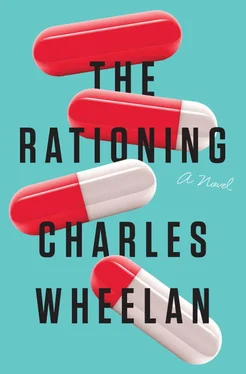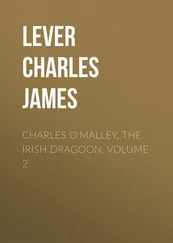Let me address the elephant in the room: Did the President lie to the American people? The Outbreak Inquiry Commission was equivocal on this point. The two pages in the report devoted to the President’s Honolulu address are a mishmash of ambiguous phrases and tortured use of the passive voice. My view is much clearer: The President believed he was doing the right thing by presenting the most optimistic view of the situation in that moment. As I have noted, the NIH model was showing a best-case scenario in which our existing Dormigen stocks, including the new donations, would be sufficient. One should bear in mind, too, that the results predicted by that model had been revised steadily downward ever since we first confronted the crisis. True, we had underestimated how many people would die because they did not seek medical care. There was plenty of Dormigen at that point. Was that on us? Besides, we now had the opposite problem: perfectly healthy people streaming into emergency rooms convinced they were dying. The President believed that new developments would continue to redound to our benefit: more Dormigen donations, some progress against the virus, more effective non-Dormigen alternatives, and so on. He was wrong, obviously.
In fact, the nation’s Dormigen supplies were plunging even as the President spoke. As I have noted, we all failed to recognize that the Dormigen supply was unsecured. From the moment the first New Yorker story suggested an imminent public health problem, Dormigen went missing—everything from trucks of the medicine stolen outright to doctors and nurses pocketing some pills at the beginning or end of a shift. I suppose the statement by Senator McDowell during the Outbreak hearings hewed closest to what was really happening on that morning: “The Dormigen supply was like an ice cube on a hot day. The administration blithely went about its business, even as that ice cube was melting away. It was an oversight of monumental proportions to assume that a shortage of a lifesaving drug would not precipitate theft and pilfering.” [18] Senator Derek McDowell, “Statement to the Outbreak Inquiry Commission,” 2031.
One can quibble with the metaphor, but the “melting ice cube” is a good description of what was happening. The supply was quickly secured, but that process was incomplete and ad hoc. It was as if someone suddenly directed the nation’s doctors, clinics, and hospitals to implement measures to prevent the theft of ballpoint pens. How does one even begin? No one had ever thought Dormigen valuable enough to protect. To the contrary, the drug was a handy thing for doctors to keep in their pockets, for nurses to keep in the top drawer of an examining room, and so on. Even if the administration had moved more quickly to secure the supply, the pilferage might have been just as bad . The same people had the same opportunities to pocket a few pills, or steal a truckload.
When the President addressed the nation, he believed the nation’s Dormigen stocks to be far higher than they actually were. The barn door was nailed shut eventually, but by then the “ice cube” had been sitting on a warm counter for a long time. The President and his advisers, myself included, should have anticipated that Dormigen would go missing. We should have put measures in place to prevent it; on that morning in Honolulu, the President should have been more aware of what was happening. The NIH should have reacted more quickly to the early reports of pilferage, though to be fair the NIH senior staff were busy fielding calls from foreign governments making generous new Dormigen offers. Every one of those calls—two thousand doses from Qatar; five thousand doses from South Korea; eighteen thousand from Australia—was literally a lifesaver. The irony, of course, is that the NIH was bringing new Dormigen in the front door even as it was disappearing out the back.
I should make one other non-obvious point. Stolen Dormigen was not quite as disastrous as it may first appear. There is no recreational value to Dormigen; it offers no high, not even pain relief. No one takes Dormigen if they do not have to. In theory, then, every stolen dose replaces one that would have been prescribed anyway—provided the stolen medicine goes to people who really need it. Unfortunately there were twin tragedies amplifying everything else going wrong on this front: reasonably healthy people started taking Dormigen they did not need; and many sick people ended up with counterfeit Dormigen. I can only marvel at the speed with which entrepreneurial opportunists flooded the Internet with “special deals” promising Dormigen “delivered to your doorstep.” According to the Outbreak Inquiry Commission, the first of these hoaxes appeared online only ninety minutes after The New Yorker first made the Outbreak public.
I was simultaneously impressed and horrified by these hucksters. Each scam had its own ridiculous explanation for why an online vendor happened to have surplus lifesaving medicine while the rest of the country was in shortage: “Army surplus”; a “special unregulated supply from Costa Rica”; a “new patented method for producing the drug on demand”; and many others. [19] These are all real examples gathered by the Outbreak Inquiry Commission.
The audacity of these modern snake oil peddlers was matched only by the gullibility of those on whom they preyed. Some fifteen million people rushed to the Internet to buy Dormigen; they ended up with everything from sugar pills to decongestant tablets. (There is a modicum of good news here; a reasonably high proportion of the people who bought fake medicine did not need the real stuff anyway.) Still, there were several hundred thousand people who needed Dormigen and ended up with something else entirely.
After the President finished his address, I felt the producer pulling me by the elbow out of the crowded common area. He said, “We’re on in New York in ninety seconds. It’s a standard interview format. You’ll have about two minutes and twenty seconds. They’ll try to keep you longer, but you can’t. Cleveland will be queued up right when you finish.” He guided me to a seat in the small soundproof room. As I put on the headphones, he hustled out of the room into the production booth on the opposite side of a soundproof glass partition. Soon I could hear his voice in my headphones: “We’re on in thirty.” One of the assistants had pasted a paper sign in the window that read NYC to remind me of the market to whom I was speaking. I chuckled at the notion that I would need to be reminded of that detail. Seven or eight interviews later I found myself glancing at the sign; I had new sympathy for the occasional rock band who would yell, “Hello, Dayton!” only to be greeted by stunned silence among the fans in Akron.
There was a burst of static as the producer patched me into the New York studio, at which point I could hear the program in progress: “…joined by the administration’s top adviser on this virus. Doctor, thank you for joining us.” I have a Ph.D., but I have never referred to myself as “doctor,” so this left me temporarily flat-footed.
“It’s my pleasure,” I said.
The host began, “The President just addressed the nation, telling us the situation is under control. He made no mention of a possible terror attack. Why is that?”
“Because that’s not what’s happening,” I said. “ Capellaviridae is a very common virus that has turned virulent—”
“That’s what we’re being told, but why now? How does a common, supposedly innocuous virus suddenly become deadly?”
“We are still trying to figure that out,” I said. I was not used to being interrupted midsentence.
“Then how can we be sure that this is not some kind of domestic terror attack, as is being reported elsewhere?”
Читать дальше












